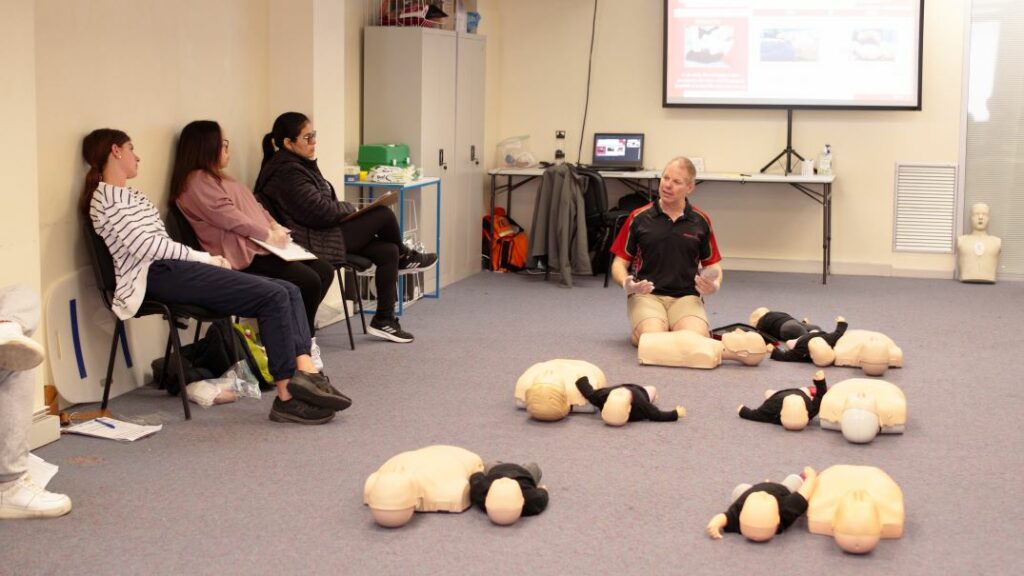Introduction
In times of emergency, the capacity to execute Cardiopulmonary Resuscitation (CPR) can be the difference in between life and fatality. In Australia, comprehending the CPR certification requirements is crucial for any individual wishing to end up being a licensed rescuer. This detailed guide will certainly delve into what you require to know about mouth-to-mouth resuscitation qualification in Australia, consisting of training options, credibility of certificates, age-specific standards, and more.
CPR Qualification Needs in Australia: What You Need to Know
What is CPR?
Cardiopulmonary Resuscitation (CPR) is an emergency situation procedure done when a person's heart quits defeating or they quit breathing. It incorporates upper body compressions with rescue breaths to preserve blood circulation and oxygenation till specialist medical aid arrives.

Why is CPR Important?
The critical value of CPR can not be overstated-- first aid course melbourne cbd it conserves lives. According to stats from the Australian Resuscitation Council, instant mouth-to-mouth resuscitation can double or triple a sufferer's chance of survival after heart attack.
Understanding mouth-to-mouth resuscitation Certification
To end up being certified in mouth-to-mouth resuscitation, people must undergo First Aid Courses certification in Melbourne training via identified companies. Qualifications typically consist of hands-on skills practice and academic expertise about cardiac emergencies.
Types of CPR Educating Available
Basic Life Assistance (BLS) vs. Advanced Life Support (ALS)
- Basic Life Support (BLS) focuses on fundamental strategies including breast compressions and rescue breaths. Advanced Life Support (ALS) covers extra intricate treatments such as innovative airway administration and medicine administration.
Online vs. In-Person Training
- Online mouth-to-mouth resuscitation certification deals versatility yet might do not have hands-on experience. In-person courses offer functional abilities technique important for reliable response in emergencies.
CPR Certification Process
Choosing a Training Provider
When seeking training, ensure that your selected service provider is accredited by trustworthy companies like the Australian Resuscitation Council or St John Ambulance.
Course Period and Content
Most fundamental courses last about 4 hours and cover:
- Adult CPR techniques Use of Automated External Defibrillators (AED) Recognition of heart attack signs
CPR Certification Validity
How Lengthy Does a CPR Certification Last?
Typically, a mouth-to-mouth resuscitation certificate continues to be legitimate for three years prior to needing renewal. It is crucial to stay upgraded with the most recent procedures and guidelines.
Renewing Your Certification
Renewal usually entails taking a correspondence course that reviews important skills and updates attendees on any type of changes in guidelines.
Age-Specific mouth-to-mouth resuscitation Standards Australia
Adult vs. Kid vs. Infant mouth-to-mouth resuscitation Techniques
Different age call for customized strategies:
- For adults, focus on compression deepness and rate. For children, readjust compression depth based on size. Infant CPR technique entails gentle compressions and cautious ventilation.
Infographic: Age-Specific Techniques
|Age|Compression Deepness|Ratio|| -----------|-------------------|-------|| Grownups|5-6 centimeters|30:2|| Kids|4-5 centimeters|30:2|| Babies|1.5 cm|30:2|
CPR Tools in Australia
Essential Equipment for Reliable Response
Having accessibility to correct CPR equipment aids successful resuscitation initiatives:
AEDs Pocket masks GlovesUsing AED with CPR in Australia
An Automated External Defibrillator can substantially boost survival prices when utilized alongside CPR-- knowing exactly how to utilize an AED efficiently is essential for each rescuer.
Common Myths Concerning CPR
The Myth of "CPR Always Restarts Heart"
Many think that executing mouth-to-mouth resuscitation will certainly constantly restart a heart; nevertheless, this is deceptive-- mouth-to-mouth resuscitation keeps blood circulation until professional assistance gets here but does not guarantee revival.
Debunking Various other Misconceptions
Other myths include misunderstanding compression depth or the efficiency of rescue breaths versus hands-only techniques; education plays an important duty in resolving these falsehoods.
Special Situations in Performing CPR
CPR for Sinking Victims
Drowning sufferers frequently need immediate rescue breaths as a result of their distinct scenarios; understanding this context improves outcomes significantly.
Sports-Related Heart attack Procedures
Recognizing indications particular to professional athletes assists responders act swiftly-- education pertaining to sports-related cardiac incidents is essential for coaches and trainers alike.
Workplace Emergency Plans
Establishing Preparedness at Workplaces
Every workplace ought to have an in-depth emergency plan that consists of stipulation for emergency treatment training like cpr and first aid combo training courses for employees.
Training Workers Effectively
Regular training sessions make sure team are prepared-- not only does this secure staff members but also improves total work environment security culture.
Frequently Asked Questions (Frequently asked questions)
Q1: Exactly how do I locate local CPR classes?
A1: Local community centers or healthcare facilities frequently supply classes; web sites of companies like St John Rescue offer listings as well.
Q2: Can I obtain my certification online?


Q3: Is there a distinction in between adult and child certifications?
A3: Yes! Courses specifically customized for infants and youngsters focus on age-specific techniques which vary from those instructed for adults.
Q4: Just how usually ought to I renew my certification?
A4: Usually every three years; nevertheless, staying upgraded annually with refreshers is highly suggested offered advancing guidelines.
Q5: Are there any type of specific regulations pertaining to compulsory training?
A5: While regulations might differ by state or territory, several workplaces are required by legislation to have actually trained initial responders offered on-site during working hours.
Q6: What stats support the effectiveness of CPR?
A6: Studies indicate that prompt bystander-administered mouth-to-mouth resuscitation can increase survival prices from cardiac arrest substantially-- commonly increasing possibilities of patient recuperation contrasted to no intervention at all.
Conclusion
Understanding the details of the CPR accreditation requirements in Australia encourages individuals throughout numerous fields-- from health care professionals to daily residents-- to act decisively throughout emergency situations. With proper training, awareness of age-specific guidelines, understanding about tools such as AEDs, and experience with usual misconceptions surrounding resuscitation efforts, one can absolutely make a difference when it matters most. Whether you're thinking about signing up in local classes or discovering on the internet options like online cpr certification, keep in mind that each step taken in the direction of coming to be qualified adds toward saving lives-- a noble pursuit indeed!